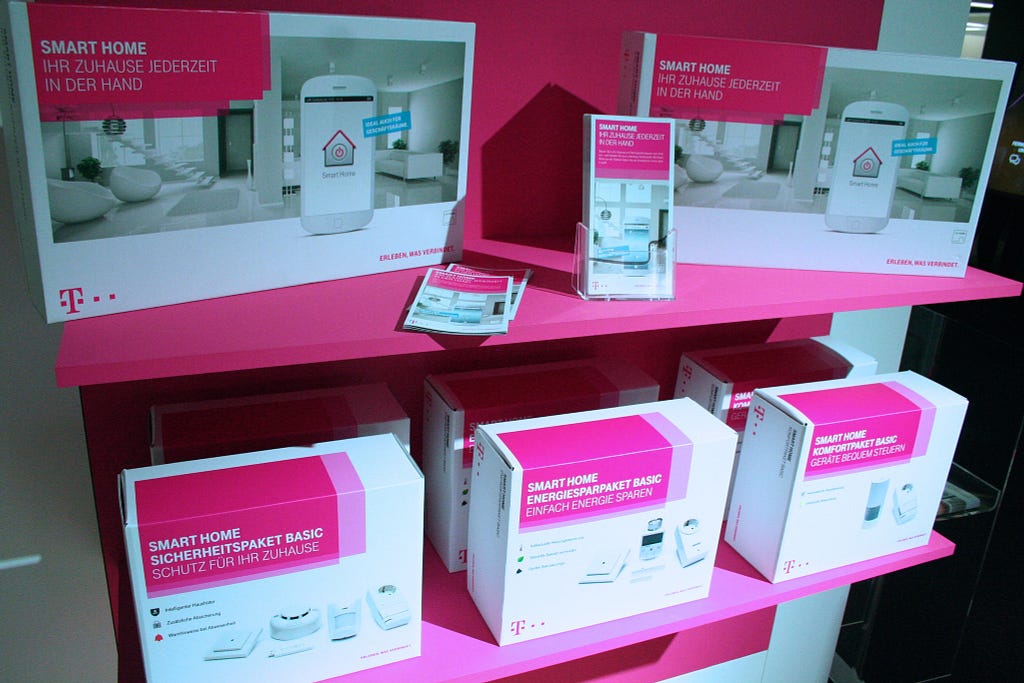Latest news about Bitcoin and all cryptocurrencies. Your daily crypto news habit.
 Image from — https://www.flickr.com/photos/75654647@N05/15010894320
Image from — https://www.flickr.com/photos/75654647@N05/15010894320
Is your washing machine connected to the Internet, yet? How about your sous-vide cooker or your thermostat? More and more home appliances and devices are gaining an Internet connection with various use cases that allow standard appliances to become more interactive and autonomous.
IoT devices in the home are great for an electronics enthusiast by providing exciting new opportunities to automate routine actions. Connecting two different devices to each other starts to become a necessity, but with so many competing standards, manufacturers don’t make this as easy as you’d hope. Other companies stepped in to fill these gaps. Over the last few years, multiple providers have released platforms specifically for the Internet of Things devices, and accessing these platforms has become more accessible.
In this article, I’ll briefly describe the top choices for automation enthusiasts and, as you’re likely a willing tinkerer, leave you to experiment. Please share your experiences below!
IFTTT
While not strictly an IoT platform, IFTTT makes connecting ‘things’ to other ‘things’ and triggering events based on their inputs and outputs as easy as possible. So much so, many other IoT platforms offer IFTTT integration, letting their platform do a lot of their work for them.
The platform lacks the visual overview of others listed here but has a good set of IoT ‘applets’ to get you thinking about how you could connect your devices.
Stringify
Allowing you to connect hardware and software products, Stringify is a little like IFTTT, but Stringify is a mobile application. The app-based interface turns your phone into a sort of universal remote control. Winning dozens of awards, this is a great starting point for automation-loving non-coders. And, for the coders, there’s the maker’s section for more advanced automation options.
Yeti
In a similar vein to Stringify, we will take a look at Yeti. It uses a handy feature that automatically finds compatible devices on your network without you having to add them manually.
Domoticz
One of the more popular open source options you can install is Domoticz, which is on a wide variety of gateway and ‘things’ devices. It allows you to create flows, widgets, push notifications, and is infinitely configurable. However, this platform is a bit complicated and not for the faint-hearted.
Jeedom
With a mix of DIY and pre-built gateway boxes, plus an app marketplace, optional cloud services, and mobile applications, Jeedom is a good mix for houses consisting of power and casual users.
OpenHAB
Similar to Jeedom, OpenHAB is self-hosted but integrates well with cloud services and a wide variety of open and proprietary hardware. It uses familiar concepts of rules, triggers, and actions, plus new ones are thrown in for good measure such as voice control and a pluggable architecture to add support for any particular use cases you have.
Home Assistant
Another open source project with a stronger focus on end users is the Home Assistant. This platform has you covered for many of the device manufacturers. It has a good selection of software providers and integration services, as well as a few others that I haven’t seen with many other platforms, such as Plex, Kodi, and push bullet.
Calaos
Similar to Home Assistant, Calaos aims to automate your whole home — not just devices with sensors. You create ‘scenarios’ based on time of day, moods, or rooms, and a scenario triggers connected devices including music and other media. Calaos is a set of software and (touchscreen) hardware that you can buy from the website above or assemble yourself with supported hardware.
OpenNetHome
If your gateway host can run Java, then it can run OpenNetHome. Its feature set is a little less precise than some other options listed here, focusing more on hardware feature support rather than a use case. The GUI is consisted of mostly lists, but there are optional plugins available for certain tasks.
Wia
Also focused on developers, Wia connects popular boards to its cloud (or self-hosted) platform where you can build widgets and flows to display and react to sensors that you have connected to them. Then, you can connect Wia to messaging and communication platforms to trigger alerts based on input data from your devices.
Conrad Connect
From a German electronics store, Conrad, Conrad Connect provides an IoT platform aimed at consumers, and it’s a perfect pairing — I’m surprised more stores don’t try. They bundle integrations with favorite products, like Philips Hue lights, Fitbit bracelets, Nest thermostats, and software tools, such as IFTTT and Google docs, that you can connect with a drag and drop interface.
So, What Should I Use?
This is always a hard question to answer, isn’t it?! I am only starting to get on board with the home IoT bandwagon. I have a RaspberryPi sitting around and a household of people who want the setup to work. I need something flexible, and suitable for all, which also means the ability to add some more convenient cloud services. Weigh up the ‘users’ in your home and what they need to make your decisions.
Originally published at dzone.com.
What Smart Home IoT Platform Should You Use? was originally published in Hacker Noon on Medium, where people are continuing the conversation by highlighting and responding to this story.
Disclaimer
The views and opinions expressed in this article are solely those of the authors and do not reflect the views of Bitcoin Insider. Every investment and trading move involves risk - this is especially true for cryptocurrencies given their volatility. We strongly advise our readers to conduct their own research when making a decision.